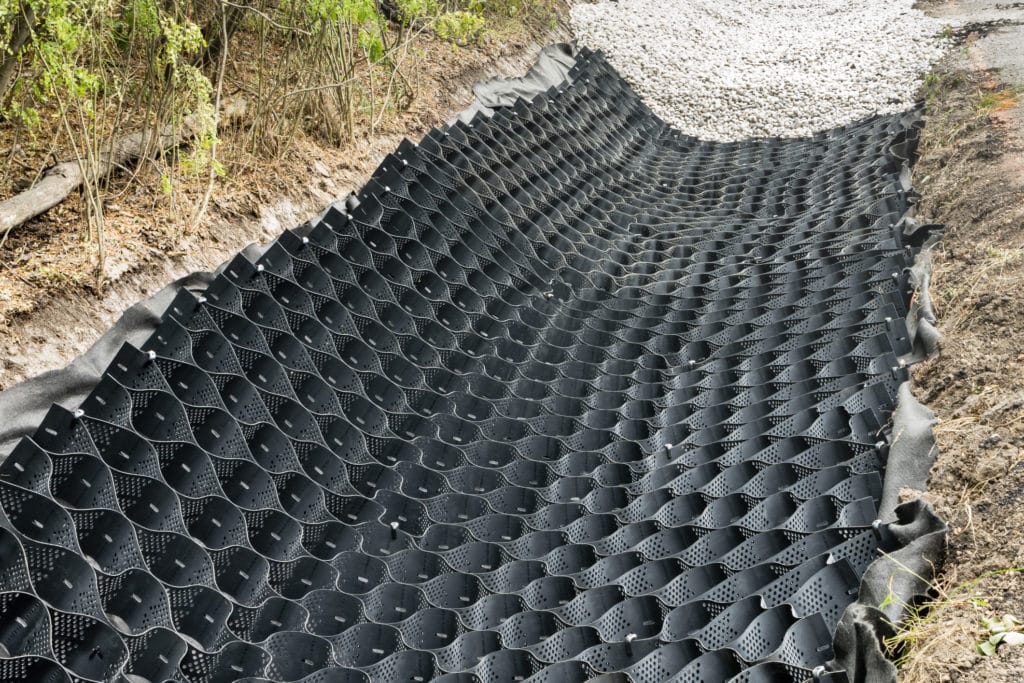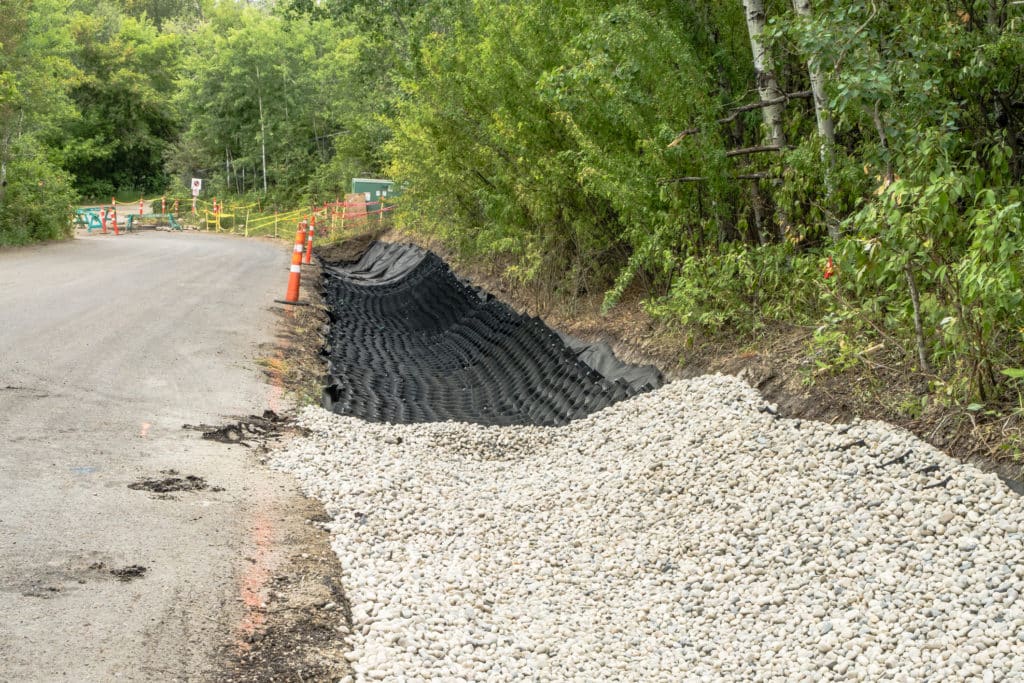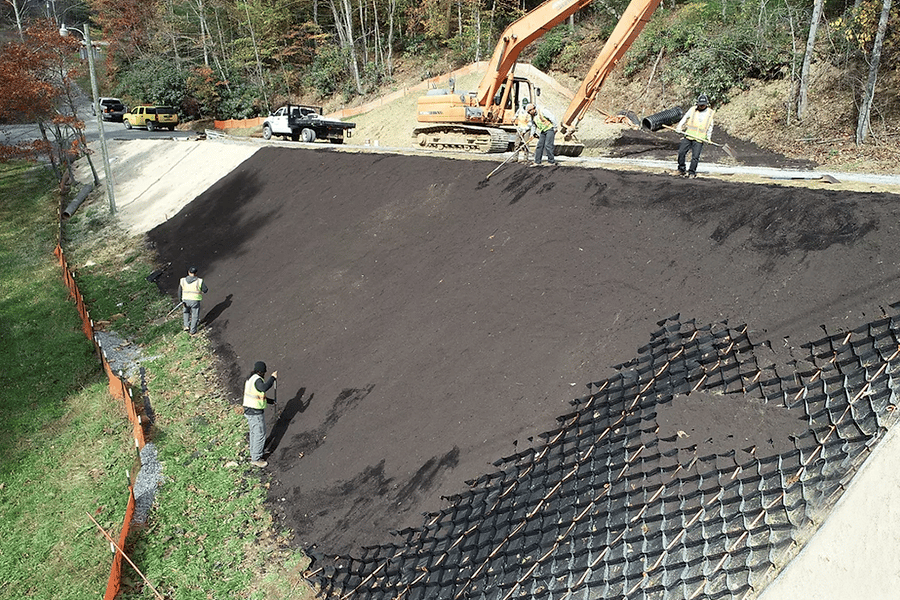While protecting slopes and hills is already challenging due to erosion control, the project becomes even more difficult if it is a sharp embankment.
The general rule of thumb is the steeper the slope, the harder it is to design and construct an effective stabilization method. Similarly, the stakes as a civil engineer are greater for embankments that have a high chance of failure.
You may have heard of a slope’s integrity crumbling over time due to improper runoff, drainage, and wind erosion that caused severe damage to whatever lies below. The city may have had to close roadway traffic and fix the disaster for millions.
Without stabilizing a steep slope the right way, a civil engineer’s reputation is on the line. Preventing soil erosion is a massive deal when it puts your firm in jeopardy.
So what are the most effective erosion control solutions for steep slopes? Below we will highlight how to control erosion on a slope and explain the pros and cons of the options that can withstand steep slopes.
What is Considered a Steep Slope?
There are a few different classifications most civil engineers and architects use to describe steep slopes.
First, any slope with an incline under 33% is considered a moderate slope. We do not call these “steep”, and you can control these with organic matter and ground cover. Heavy rain will still cause problems, but vegetation with shallow roots stabilizes most slopes.
The next level of slopes falls between 33% and 50% and requires more technical approaches for erosion control. On a steep slope, you have a decent chance of vegetation succeeding.
The steepest slope angles are greater than 50% and require the highest care from civil engineers. Our team recommends industry-grade structural support and stabilization methods, such as retaining walls and terraces.
Slope Embankment Vegetation & Ground Cover
We’ve seen bare soil hillsides and slopes result in failure over periods of rainfall and wind. In most cases, the civil engineer or architect never considered deep-rooted plants or grass cover as an erosion control solution.
These strategic crops and vegetation can protect and maintain the integrity of your client’s hillside for years to come.
Trees and bushes, though often not an option on steeper slopes, can provide some stability with their root systems. Other common options on more gradual slopes, include mulch and bark chips.
Company costs, quality of soil particles, and level of shade can make vegetation impractical for some projects. You may be dealing with a steep slope right now far beyond the help of grass cover that even an erosion control blanket cannot save.


Preventing Erosion on Steep Slopes
When the vegetative solution for steep slopes is impossible, civil engineers turn to other embankment reinforcements. Hills that exceed a 50% incline require some type of structure or very involved technique.
Below are a few common erosion control measures for steep slopes and tips.
Riprap
Also referred to as rock armor, riprap is the layering of angular rocks along a slope to stabilize the slope. Riprap protects the soil surface and prevents runoff and is effective for slopes with an incline of up to 50%.
The downside is you may need a more effective erosion control solution if the steep slope is severe enough.
Geocell
You can install military-proven HDPE panels across the slope embankment no matter how sharp the angle is and prevent project failure. Each “cell” accepts various infill, including concrete and aggregate, and interlocks it inside its honeycomb structure.
This steep slope solution has been shown to stop erosion control on all hillsides, regardless of how steep. It is a cost-effective option when considering company funds and doesn’t require specialists to install.
Terraces
Building terraces is a common way to stabilize a slope and prevent erosion. Depending on the project budget and slope grade, you can create the terraces from concrete blocks and wood.
The less existing vegetative support, the more complex the terrace wall needs to be. A properly-designed terrace will stabilize complex slopes by reducing both the volume and speed of runoff.
Retaining Walls
For erosion control and slope stabilization, retaining walls are one of the most common and versatile solutions. From large-scale gravity walls to mechanically stabilized earth walls, different types of retaining walls work in various slope inclines.
Civil engineers often design these commercial constructions to retain the soil’s position and drain water. Both purposes of retaining walls help the steep hillside weather any rain and wind storms.
Reliable Geocell as a Steep Slope Solution
When it comes to steep slopes, stopping erosion can be costly, time-consuming, and difficult. Every slope is unique, and other factors like the amount of exposed soil and existing infrastructure have a major influence on the project.
However, we believe it is in your firm’s best interest to get a project evaluation for geocell if you haven’t looked into it before. The versatile HDPE panels can also stabilize other projects, such as retaining walls and shorelines.
Developers across industries utilize geocell solutions for reliable, durable, and cost-effective foundations. Consult our engineers by calling (888)-511-1553 to learn how geocell can save company costs, time, and installation difficulty.
